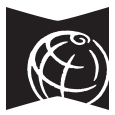Arthur C. Pillsbury Collection
See photographs of the Klondike Gold Rush, California, Oregon and Washington taken by Arthur C. Pillsbury (1870-1946) between about 1896 and 1900.
-
Sea Serpent and Grizzly totem poles outside Chief Shake's house in Wrangell, Alaska, ca. 1899
The pole on the left is the ""Sea Serpent"" pole and the pole on the right is the ""Bear up Mountain"" pole.
Identifier: spl_ap_00075
Date: 1899
View this item -
Panoramic forest view, ca. 1899
Location is likely Alaska, British Columbia or Yukon Territory based on other photographs in the collection but the exact location is unknown.
Identifier: spl_ap_00032
Date: 1899
View this item -
"Joseph Closset" stern wheeler at Five Finger Rapids on Yukon River, ca. 1899
The Joseph Closset frequently traveled the Yukon River to carry prospectors to the gold fields during the Klondike Gold Rush.
Identifier: spl_ap_00156
Date: 1899
View this item -
Tagish Lake, Canada, ca. 1899
Tagish Lake is located on the border of British Columbia and Yukon.
Identifier: spl_ap_00159
Date: 1899
View this item -
Boats unloading freight on waterfront in Nome, Alaska, September 28, 1899
Boats landing on the Nome waterfront carrying supplies for prospectors. Crowds of people line the beach. The same photograph was published on page 273 of the "Brotherhood of Locomotive Firemen and Enginemen's Magazine," Volume 29. Gold was discovered near Nome in the summer of 1898. Prospectors rushed to stake claims and Nome's population quickly ballooned to 10,000 people. In 1899, more gold was discovered on beaches near the town and spurred an even greater rush of visitors. By 1900, an estimated 1000 people a day were arriving in Nome. Pillsbury took some of the first available photographs of the city. Following his departure, the winter conditions made it too difficult for others to reach the area. This photograph was published in the June 1900 issue of Harper's Weekly. An illustration based on the photograph was also featured in the June 1900 issue of McClure's Magazine.
Identifier: spl_ap_00178
Date: 1899-09-28
View this item -
-
View of Long Lake, B.C. from Long Lake Hotel, ca. 1899
Long Lake lay along the Chilkoot Trail, a Tlingit trade route between Skagway, Alaska and Lake Bennett (on the border of British Columbia and the Yukon Territory) that was used by many prospectors during the gold rush. The hotel was located at the south end of the lake. Signs on the side of the hotel advertise beds, lemonade and a bakery.
Identifier: spl_ap_00096
Date: 1899
View this item -
White Pass and Yukon Railway construction celebration at Bennett, B.C., July 6, 1899
During the Klondike Gold Rush, the White Pass was one of the routes used by prospectors to travel from Skagway to the Yukon gold fields. In April 1898 the White Pass and Yukon Railroad Company was formed in an effort to establish an easier way through the pass. Construction on the railroad began the following month. Thousands of workers worked around the clock in treacherous conditions to complete the project. The railroad track was completed at White Pass on February 20, 1899 and reached Lake Bennett on July 6, 1899. The final spike on the railroad was placed on July 29, 1900 in Carcross, B.C.
Identifier: spl_ap_00113
Date: 1899-07-06
View this item -
Circle City waterfront, Alaska, ca. 1899
A white tent appears at the left. Signs for a store, general merchandise and Pabst beer can be seen on the buildings in the distance.
Identifier: spl_ap_00173
Date: 1899
View this item -
Boat at Calico Bluff, Alaska, ca. 1899
Calico Bluff is located on the Yukon River near Eagle, Alaska.
Identifier: spl_ap_00187
Date: 1899
View this item

